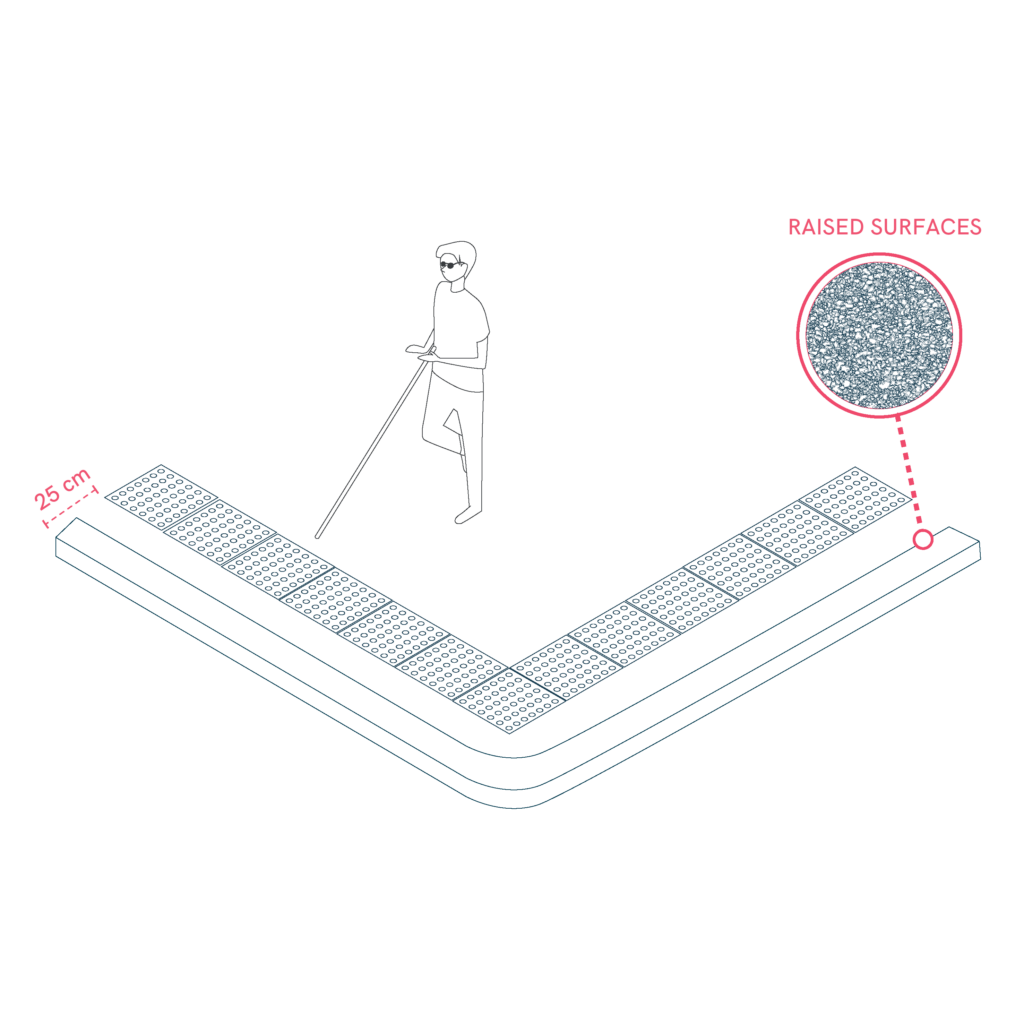Visual and Tactile Differentiation
In designing spaces, it’s important to ensure that any level changes are clearly identified to promote safety for everyone, especially individuals with visual impairments. Areas with significant height differences should be marked with both tactile and visual indicators to make them more noticeable. Raised surfaces or textures along edges can help guide those with limited sight, while contrasting colors or patterns can help highlight the change for others. These cues should start a little before the edge to give users enough time to notice the difference. By making sure these features are easily detectable, we create a safer, more accessible environment for all.

- Identify hazardous level changes. Locate areas with differences greater than 25 cm.
- Add tactile indicators. Install raised surfaces or textures along the edges.
- Incorporate visual differentiation. Use contrasting colors or patterns to highlight the level change.
- Ensure tactile and visual cues start at least 25 cm from the edge.
- Check that these measures are perceivable by individuals with visual impairments.
Sources
- https://accessible-eu-centre.ec.europa.eu/content-corner/digital-library/en-172102021-accessibility-and-usability-built-environment-functional-requirements_en
- https://www.access-board.gov/adaag-1991-2002.html#2.%20GENERAL
- https://universaldesign.ie/built-environment/building-for-everyone/building-for-everyone-full-series
- https://www.codigotecnico.org/pdf/Documentos/SUA/DccSUA.pdf
